Origins Revealed: The Orkney Chair Goes From Humble to Haute
http://decor-ideas.org 11/10/2013 03:40 Decor Ideas
There's a chair once made by fishermen and farmers on the remote Orkney Islands (off the coast of Scotland), crafted from whatever materials they could scrape together. Now known as Orkney chairs, today they grace some of the chicest homes around the world, as well as the furniture collection of the Victoria and Albert Museum. Everything about the chairs was born of necessity; made for modest homes, the original chairs were composed of straw and driftwood. Here is how they've evolved.
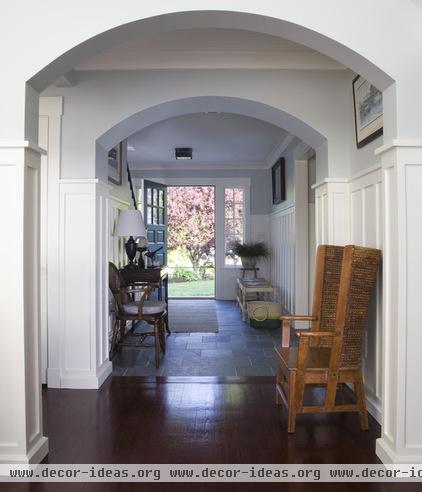
The Orkney chair originally provided a place to sit near the hearth; its high back blocked cold drafts while enveloping its occupant in the heat from the fire. Thus, it's also referred to sometimes as the Orkney warming chair.
Function determined its form at first, but the chair is now used to add character and texture to well-appointed rooms. Once a very short chair that was closer to the fire but past the sooty air, it has evolved over the years.
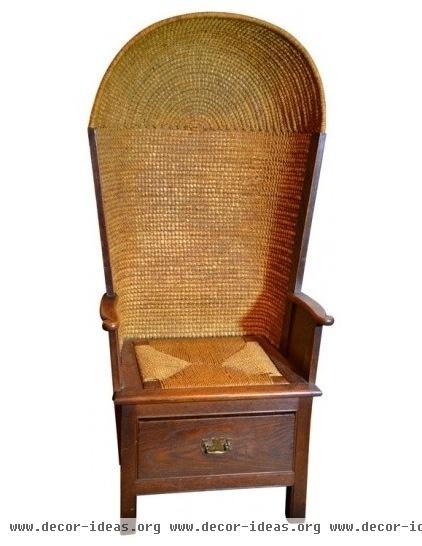
Orkney Island Hooded Chair In the 1870s Orkney resident David Kirkness opened a joinery workshop and began to make the chairs on the side, but they soon became his most popular product. The style of most of the reproductions available today is based on his chairs, which he crafted from designs passed down through many generations.
Kirkness crafted versions for gentlemen, ladies and children, and produced a hooded version with a drawer. The hood transforms it into a porter's chair. The drawer underneath is the right size for a knitting project, a book or perhaps a bottle of whiskey to help warm up its occupant.
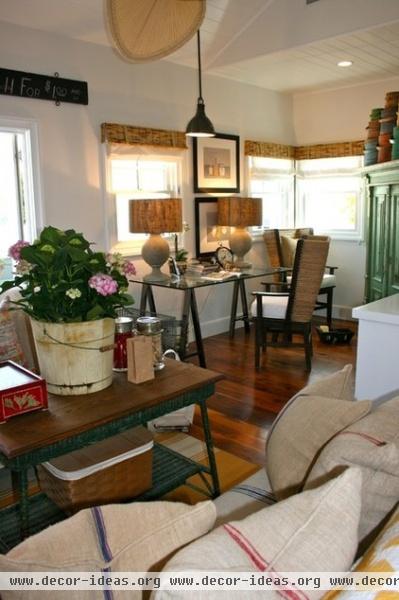
Orkney chairs made their way around the world thanks to the Scottish Home Industries Association, which promoted them at exhibitions.
Today in coastal Southern California, cold drafts aren't such an issue, but the chair's wrap-around back provides coziness at a desk. The woven back also adds a chunky beach texture.
See the rest of this home
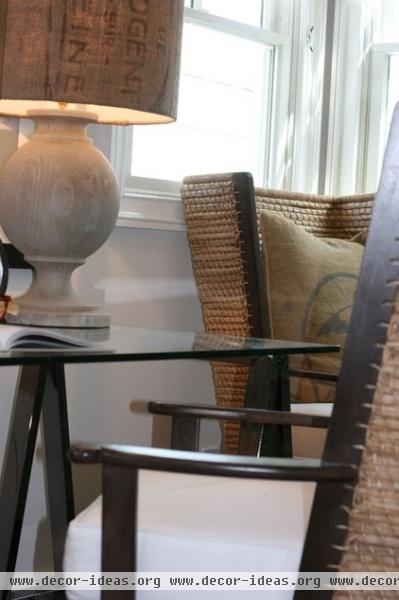
"The Orkney chair is a personal favorite of mine. There's something wonderful about a handwoven chair," says interior designer Kelley Motschenbacher. "The backs are not wicker but woven rush, so they are thick and give when you lean back in the seat."
Motschenbacher likes to pair the Orkney with more modern furniture, like this glass-topped sawhorse desk. "They are just very different and interesting and a little bit old English country in style," she says.
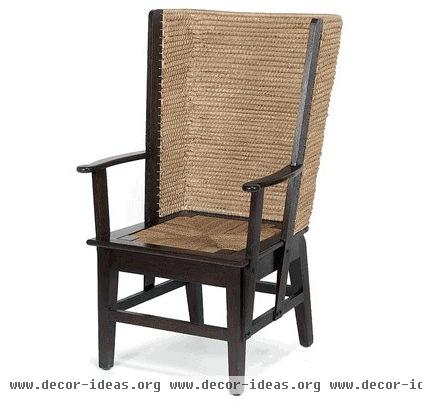
Orkney Chair With Woven Seat - $1,230 The original makers of Orkney chairs had to use driftwood because of a lack of trees on the islands, but today you can buy reproductions made of woods like Filipino mahogany.
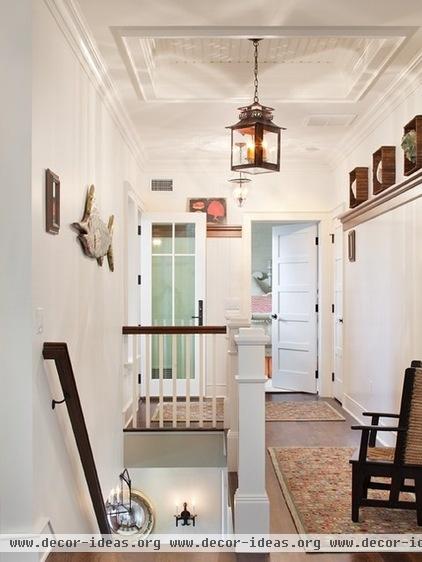
An Orkney chair adds some history, texture and heft to this hall in a beach house on the Jersey Shore.
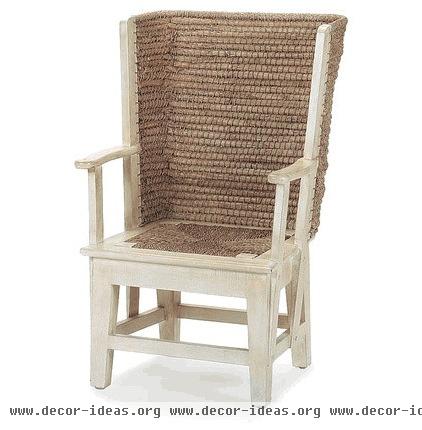
Orkney Warming Chair - $670 For those of you in the middle of the country, Orkneys will look great in your homes, too. Their history of being crafted from hay makes them a great fit for a farmhouse. This version, with antique white wood, would work well in a cottage or a home with Belgian flair.

Some furniture designers have co-opted the Orkney look into more modern pieces, like bar stools. The interior designers at Harte Brownlee Associates had their upholsterer wrap the backs of these bar stools in raffia. Given that and the shape, they look like the Orkney chair's younger cousins.
Related Articles Recommended












